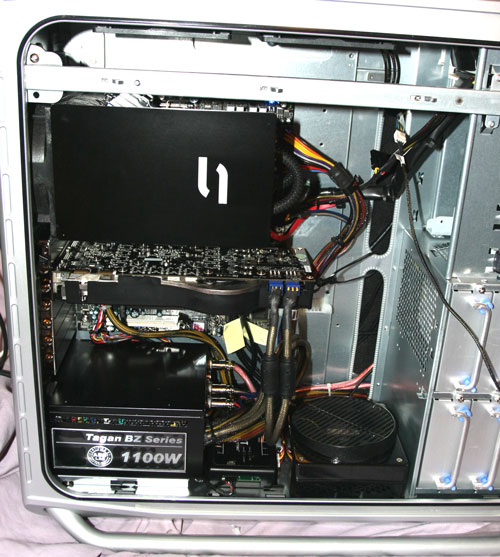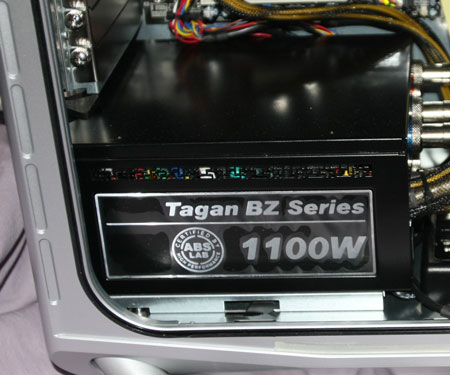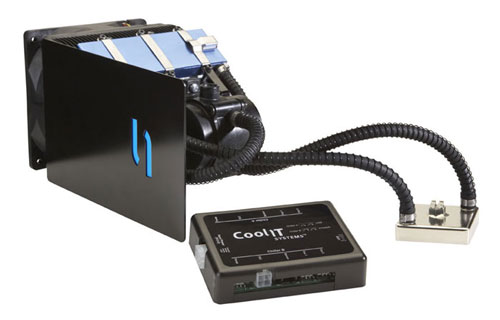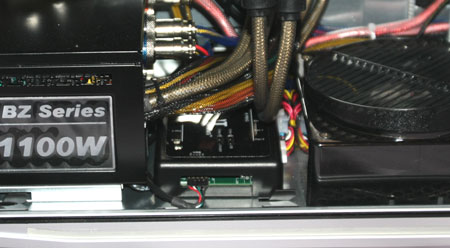The ESA Box

The ESA test system is built around certified ESA hardware, and the heart of the test system is the EVGA 122-CK-NF68 motherboard powered by the NVIDIA 680i chipset. Frankly, the use of the 680i chipset for the ESA test system was a bit of a surprise, since it was expected that ESA certification would begin with the 780 series. However, if you have been following motherboard developments at AnandTech you are already aware that the birth of 780 and 790 has not been an easy one.
In the interest of eliminating new variables in the equation, NVIDIA built the test ESA box on a 680i chipset board. Work is nearly complete on 780 and 790 boards that will become the heart of ESA, and as soon as they are ready ESA will be evaluated from a performance standpoint. NVIDIA has clearly stated that their goal with ESA is that overclocking performance will be just as good with the ESA interface as it is on the same board using the BIOS tuning parameters.

The test system is wrapped in a Cooler Master Cosmos case. However, this is not the standard Cosmos 1000, it is a special ESA version with added abilities for ESA fan control and temperature monitoring. With a case that comes with two top-mounted 120mm fans, a bottom facing 120mm, and a side 120mm fan the desire for central control should be obvious. The Cosmos ESA is marketed as the model 1010, and you can find it available at Newegg and other etailers.

A Tagan 1100w modular power supply is power central for the ESA box. The Tagan PSU is remarkably compact considering the hefty power rating.

CoolIT keeps the Intel E6850 dual-core CPU nice and cool with their hybrid self-contained water and TEC (Thermal Electric Cooling) Freezone Elite. The MTEC Control Center is the black box in the picture, and it is the system status monitor and control module for this ESA certified component.

Inside the case, the MTEC module is neatly mounted between the Tagan PSU and the 120mm bottom fan module.
Storage comes courtesy of a pair of Western Digital Raptor 10,000RPM drives in a RAID 0 configuration. Corsair provides 2GB of DDR2 Dominator memory certified for DDR2-1066 duty, and Windows Vista Ultimate is the system OS.
The ESA test system is loaded for bear and certainly contains enough horsepower to bring a smile to the face of any computer enthusiast. If there was ever a system that screamed, "push me to the limits", this is certainly it.










19 Comments
View All Comments
Clauzii - Tuesday, February 19, 2008 - link
Heh, ESA is "European Space Agency".Schugy - Wednesday, February 20, 2008 - link
you're rightcasteve - Tuesday, February 19, 2008 - link
...but what are the limits of what can be done without requiring reboot?I'd love to automatically underclock / undervolt when web browsing or idling and then go to max performance when gaming.
yyrkoon - Tuesday, February 19, 2008 - link
I especially like the profile capabilities, but personally I would probably rather have the profiles save-able, and load-able from within the BIOS. Call, me a hard core old timer, or whatever, but making these adjustments from within the OS always puts a bitter taste in my mouth.Also, this Implementation sitting on top of the USB (bus?), I can not help but wonder what the performance implications are. Especially for USB devices such as Flash drives, or USB HDDs. Granted, I am personally seeing eSATA as the external storage 'wave' of the future, so USB in this respect would not really be much of an issue.
I really hope OEMs in the future do not try to shovel this down out throats however, like they have done with other 'cool' ideas they would like to think they have had . . .
LEKO - Tuesday, February 19, 2008 - link
BIOS = LegacyPC industry should have moved away from that archaic technology long time ago. We can do nearly anything in a PC... But we can't adjust basic system parameters from the OS??? Come on, we are in 2008!
yyrkoon - Tuesday, February 19, 2008 - link
Sorry pal, without the BIOS, your system would not run, and since when is voltage changing, CPU frequency changing, etc, a basic system parameter ?If you want to pay a price premium for this technology, be my guest, but I would rather not have to pay for something you want.
Jedi2155 - Tuesday, February 19, 2008 - link
I think its time for us to ditch the BIOS and get EFI on our systems...ViRGE - Tuesday, February 19, 2008 - link
Quote: "ESA can be completely Mickey Mouse if done badly, but that will be the fault of the ESA interface writer."Can is ESA open enough that someone else can come in and write an application with their own interface? What NVIDIA is using now may be shiny, but there's no way in heck that's very functional. Programs like SpeedFan may not be eye-catching, but I'd much rather have a less-shiny more-functional interface like that than what NVIDIA is currently showcasing.
How on earth did they find a way to make NVIDIA Monitor worse?
stmok - Tuesday, February 19, 2008 - link
Actually, that raises an interesting point.Wouldn't it be awesome to have a single app (Linux and Windows versions) for this ESA?